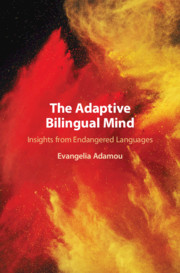Book contents
- The Adaptive Bilingual Mind
- The Adaptive Bilingual Mind
- Copyright page
- Contents
- Figures
- Tables
- Preface
- Acknowledgements
- Abbreviations
- Introduction and Methods
- Part I Do Bilinguals Maintain Language-Specific Conceptualizations?
- Part II Are Bilinguals Confronted with High Cognitive Costs?
- Part III Conclusions
- Glossary
- Appendix Research Participant Consent Form
- References
- Index
Introduction and Methods
Published online by Cambridge University Press: 23 April 2021
- The Adaptive Bilingual Mind
- The Adaptive Bilingual Mind
- Copyright page
- Contents
- Figures
- Tables
- Preface
- Acknowledgements
- Abbreviations
- Introduction and Methods
- Part I Do Bilinguals Maintain Language-Specific Conceptualizations?
- Part II Are Bilinguals Confronted with High Cognitive Costs?
- Part III Conclusions
- Glossary
- Appendix Research Participant Consent Form
- References
- Index
Summary
Humans use language to communicate with one another, a unique way of communication that is not found among other species. They are also capable of extremely elaborate abstract thinking, a core ability of the human mind. Language comprehension and production, along with thinking and other higher-order cognitive abilities, are located in a particularly complex part of the human brain, the cortex.
- Type
- Chapter
- Information
- The Adaptive Bilingual MindInsights from Endangered Languages, pp. 1 - 46Publisher: Cambridge University PressPrint publication year: 2021

